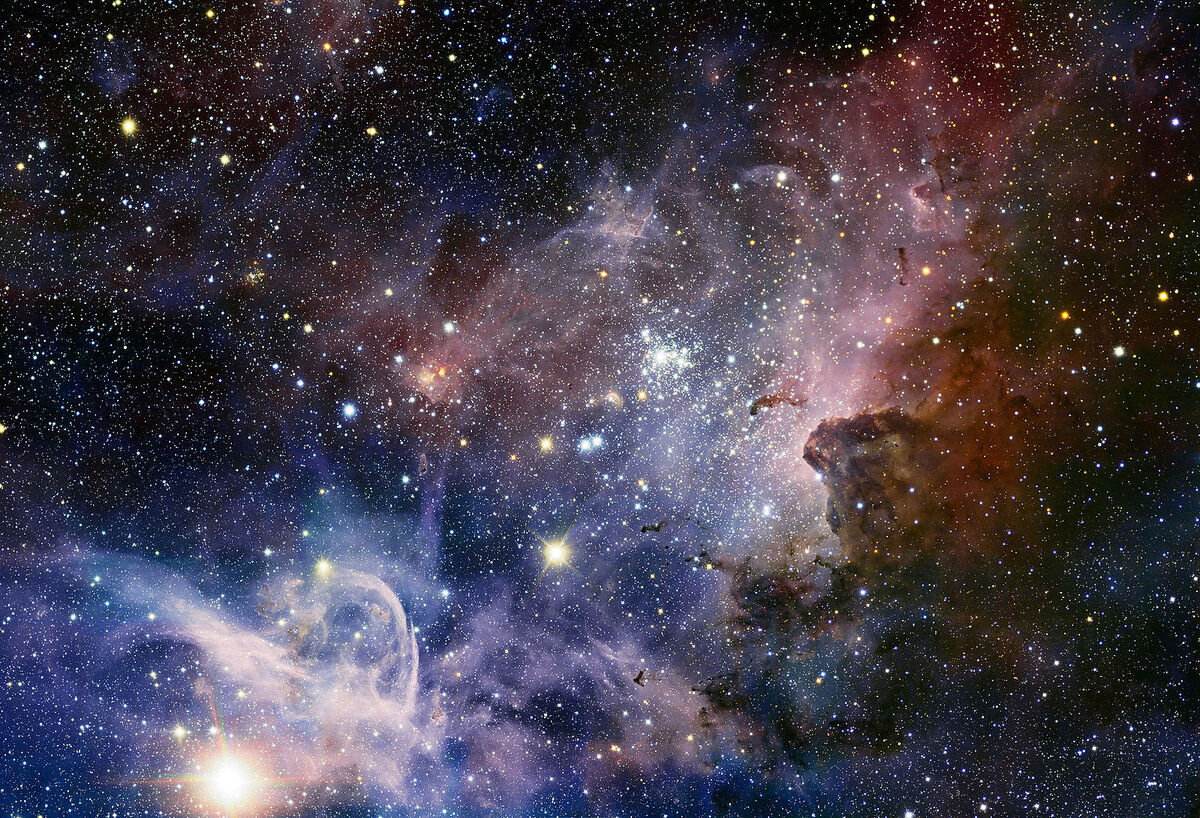
Stellar nucleosynthesis is a fascinating process that occurs within the vast expanse of the universe. It is the cosmic birthplace of elements, where stars are responsible for creating the building blocks of matter through nuclear reactions. From the magnificent explosion of supernovae to the incredible fusion reactions occurring within the core of stars, stellar nucleosynthesis is a driving force behind the diversity and richness of the elements we find in the universe.
In this article, we will delve into the captivating world of stellar nucleosynthesis and uncover 15 astonishing facts about this extraordinary phenomenon. From the creation of hydrogen and helium in the early stages of the universe to the formation of heavier elements through stellar evolution, we will explore the intricacies and significance of nucleosynthesis in shaping the cosmos we inhabit.
Key Takeaways:
- Stars are like cosmic alchemists, creating heavier elements from lighter ones through stellar nucleosynthesis. This process powers the stars and shapes the universe’s composition.
- Stellar nucleosynthesis is an ongoing cosmic recycling process, where stars generate and disperse elements, enriching the universe and laying the foundation for life-sustaining systems.
Stellar Nucleosynthesis Powers the Stars
Stellar nucleosynthesis is the process through which stars generate and produce elements. It is the very engine that powers the vast array of elements found throughout the universe.
Stars are Cosmic Alchemists
Stars act as cosmic alchemists, fusing lighter elements like hydrogen and helium in their cores to create heavier elements such as carbon, oxygen, and iron.
Stellar Nucleosynthesis Occurs in Different Stages
The nucleosynthesis process takes place in different stages during a star’s lifespan, with each stage contributing to the creation of specific elements.
Supernovae are Stellar Nucleosynthesis in Overdrive
Supernovae, the explosive deaths of massive stars, are the most intense sites for stellar nucleosynthesis. These cataclysmic events produce elements heavier than iron through rapid neutron capture.
Stellar Nucleosynthesis Explains the Origin of Elements
The formation of elements through stellar nucleosynthesis explains why certain elements are more abundant in the universe than others. It gives us insight into the cosmic origins of the elements we find on Earth.
Lighter Elements Formed in Stellar Cores
Lighter elements, such as helium and carbon, are primarily formed in the cores of stars through nuclear fusion reactions.
Stars Release Energy During Nucleosynthesis
During nucleosynthesis, stars release an enormous amount of energy in the form of light, heat, and radiation. This energy is crucial for maintaining the star’s equilibrium.
Stellar Nucleosynthesis Creates Elements Essential for Life
Stellar nucleosynthesis is responsible for the creation of essential elements for life, including carbon, nitrogen, and oxygen. These elements, along with others, are crucial building blocks for the existence of life as we know it.
Different Stars Produce Different Elements
Stars of various sizes and compositions produce different elements through nucleosynthesis. This diversity contributes to the wide range of elements found in the universe.
Stellar Nucleosynthesis Explains Elemental Abundance in the Universe
The process of stellar nucleosynthesis, along with other astrophysical phenomena, explains why certain elements, such as hydrogen and helium, are the most abundant in the universe.
Stellar Nucleosynthesis is an Ongoing Process
Nucleosynthesis is not limited to the early stages of a star’s life. It continues throughout the star’s lifetime, constantly generating and dispersing elements into the surrounding space.
Stars Act as Cosmic Recyclers
Stellar nucleosynthesis allows for the recycling of elements between generations of stars. When a star dies, it releases its enriched material back into the universe, later to be incorporated into new stars and planetary systems.
Stellar Nucleosynthesis Unleashes Supernova Explosions
When a massive star reaches the end of its life, stellar nucleosynthesis triggers a supernova explosion. These powerful events disperse heavy elements and enrich the surrounding interstellar medium.
The Periodic Table is a Testament to Stellar Nucleosynthesis
The periodic table of elements is a visual representation of the elements created through stellar nucleosynthesis. It showcases the incredible diversity of elements that exist in the universe.
Stellar Nucleosynthesis Reflects the Balance of the Cosmos
Stellar nucleosynthesis is a delicate balance between the forces of gravity, radiation, and nuclear reactions. It is this delicate equilibrium that allows for the existence of diverse elements and the creation of life-sustaining systems.
Conclusion
In conclusion, stellar nucleosynthesis is a fascinating process that allows for the creation of elements in the universe. It occurs within the core of a star, where high temperatures and pressures facilitate nuclear reactions. Through the fusion of lighter elements, heavier elements are formed, resulting in the production of everything from hydrogen to iron and beyond. This extraordinary phenomenon has played a crucial role in shaping the universe as we know it.
FAQs
Q: What is stellar nucleosynthesis?
A: Stellar nucleosynthesis is the process by which elements are formed inside the core of a star through nuclear reactions.
Q: How does stellar nucleosynthesis work?
A: Stellar nucleosynthesis occurs when lighter elements undergo fusion to create heavier elements, releasing energy in the process.
Q: What are the primary elements created through stellar nucleosynthesis?
A: The primary elements created are hydrogen and helium, which are the most abundant elements in the universe.
Q: Can elements heavier than hydrogen and helium be formed through stellar nucleosynthesis?
A: Yes, elements heavier than hydrogen and helium, such as carbon, oxygen, and iron, can be formed through stellar nucleosynthesis.
Q: What type of stars are involved in stellar nucleosynthesis?
A: Stars that are in the main sequence phase, like our Sun, are involved in stellar nucleosynthesis.
Q: How does stellar nucleosynthesis contribute to the evolution of the universe?
A: Stellar nucleosynthesis is crucial for the evolution of the universe as it produces elements that are vital for the formation of planets, the development of life, and the enrichment of interstellar space.
Q: What happens during a supernova explosion in relation to stellar nucleosynthesis?
A: During a supernova explosion, intense temperatures and pressures are created, allowing for the creation of even heavier elements through rapid neutron capture.
Q: Are there any ongoing scientific research or discoveries related to stellar nucleosynthesis?
A: Yes, scientists are continually studying stellar nucleosynthesis to gain a deeper understanding of the process and to uncover the origins of elements in the universe.
Q: How does stellar nucleosynthesis differ from Big Bang nucleosynthesis?
A: Stellar nucleosynthesis occurs within the cores of stars, while Big Bang nucleosynthesis refers to the creation of elements during the early stages of the universe’s expansion.
Q: Can stellar nucleosynthesis explain the abundance of all elements in the universe?
A: No, while stellar nucleosynthesis can explain the abundance of many elements, the origins of some elements, such as those heavier than iron, require processes beyond stellar nucleosynthesis, like supernova explosions.
Stellar nucleosynthesis powers our universe, creating elements essential for life and cosmic wonder. But there's more to explore! Dive into galactic chemical abundance patterns to unravel how stars shape their galaxies' composition over eons. Each stellar generation leaves its elemental fingerprint, a testament to the ongoing cosmic dance of creation and destruction.
Was this page helpful?
Our commitment to delivering trustworthy and engaging content is at the heart of what we do. Each fact on our site is contributed by real users like you, bringing a wealth of diverse insights and information. To ensure the highest standards of accuracy and reliability, our dedicated editors meticulously review each submission. This process guarantees that the facts we share are not only fascinating but also credible. Trust in our commitment to quality and authenticity as you explore and learn with us.


